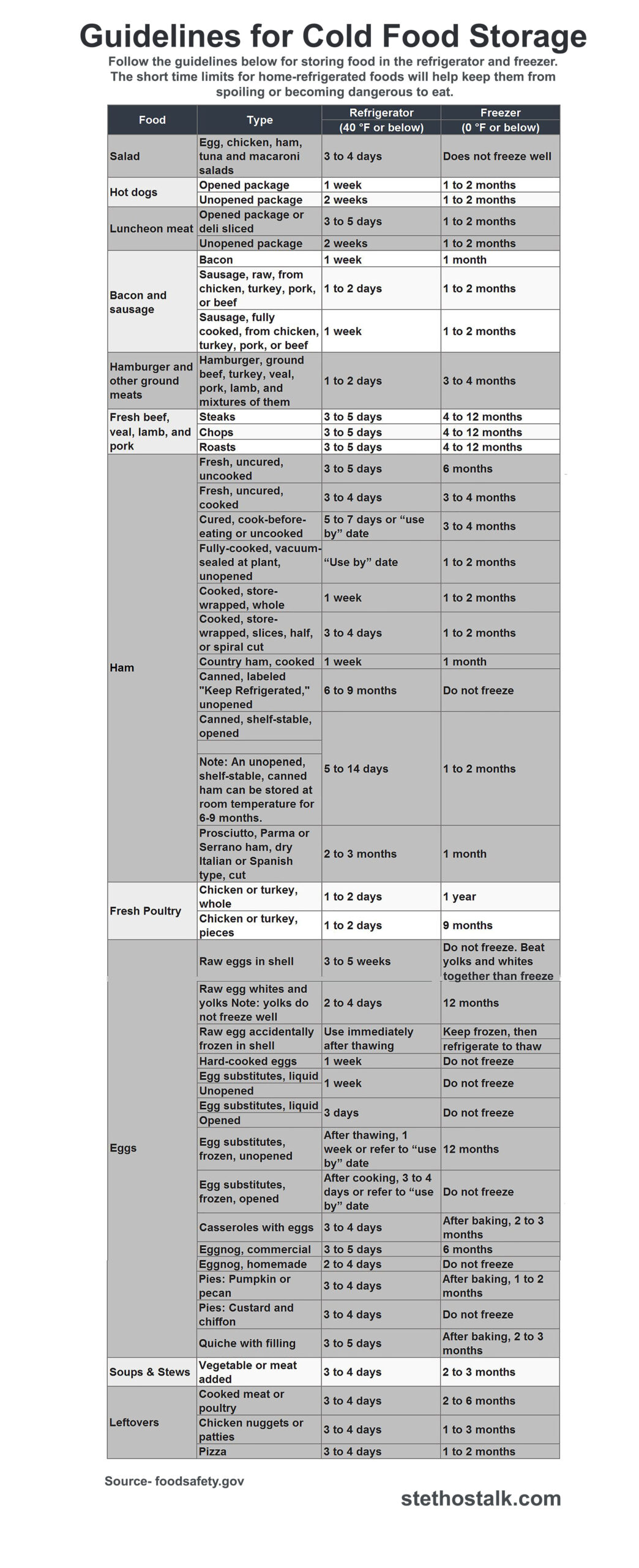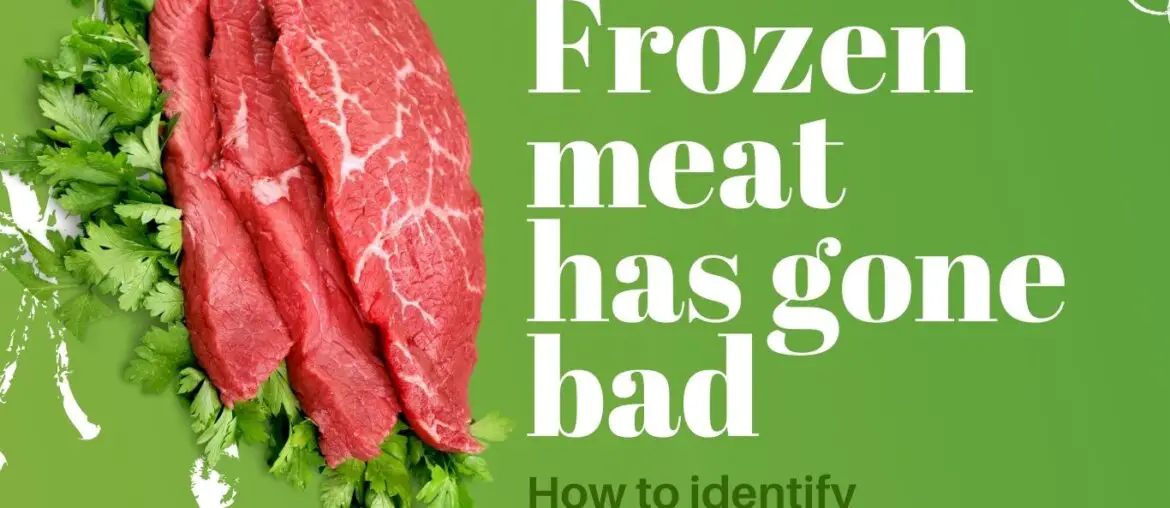Usually, meat that is frozen below minus 18 degrees Celsius is called frozen meat. Frozen meat also has a shelf life. According to FoodSafety.gov, the shelf life of frozen Fresh beef, veal, lamb, and pork is 4 to 12 months. Also, Fresh poultry can be frozen for about a year.
Is it safe after meats freezing?
Many people believe that keeping the meat in a frozen state will prevent bacteria from multiplying, and it is safe. But, in fact, refrigerating or freezing food cannot completely suppress the growth of bacteria.
“Psychrophilic bacteria” can grow in an environment of 0-20℃. For example, Listeria monocytogenes will continue to grow and multiply at this temperature. Severe Listeria poisoning has been found to cause blood and brain tissue infections. Elderly, pregnant women, and patients with chronic diseases and poor immunity patients are at higher risk of contracting Listeria.

This is how to identify frozen meat as bad
01. Check the appearance closely
The color of frozen lean meat with a quality guarantee is mostly light gray. The fat and oil are white.
As the freezing time is prolonged, the muscle proteins in the decomposed frozen meat are oxidized. Therefore, the color of the meat gradually becomes reddish-brown. Therefore, meat is not suitable for eating when it continues to darken.
When there are gray or gray-green or white or black spots on the meat’s surface, it means that microorganisms have produced a large amount of metabolism. Therefore, eating such meat is also harmful.
02. Judge by the smell
Due to the decomposition of microorganisms, spoiled meat will produce various amines, indoles, acids, and ketones. That will emit a clear, rancid smell. You can identify the one that smells bad.
It may be made into some very heavily seasoned processed products or heavily seasoned dishes in many cases. Adding a lot of pepper, aromatherapy, or salt can cover up the stale taste.
03. Touch and feel it
The fresh meat is tight and elastic and recovers immediately after pressing the depression. The surface of the meat is slightly dry, and the cut surface is slightly moist. It feels greasy but not sticky.
After the meat has deteriorated, a large number of microorganisms will multiply and produce sticky metabolites. As a result, it will cause the meat surface to become sticky or even worse. A sticky meat surface is a sign of meat rottenness.
Also, some illegal vendors will add water to the lean meat to increase its elasticity and weight. When buying, if there is too much moisture in the meat, you can use toilet paper to stick it on the lean meat, press it tightly with your hands, and peel it off after the paper is wet. Then, light it with a match. If it does not burn, it means that water has been added to the meat.
04. Judge by cooking
What should you do? If you suspect that you have bought expired frozen meat. Cut a small piece and boil it in a pot. If you see that the broth will become turbid, you can judge that meat is not good.
Is frozen meat bad for you?
Due to the busy schedule, it is convenient for us to keep meats frozen and stored. But eating frozen meat that has been stored for such a long time is not good for our bodies. Let’s see why frozen meat is bad for you
1. Accelerate aging
At shallow temperatures, germs are prevented from growing. But oxidation of fats and proteins cannot be completely prevented. Therefore, deterioration of the texture of the meat is also completely unavoidable.
Due to the oxidation reaction, the color of the meat begins to fade or weaken. It also deteriorates its flavor. Frozen meat accelerates the body’s degradation due to the oxidative process of fat.
2. Increase the probability of cancer
Bacteria such as “Listeria monocytogenes,” which I mentioned above, can be found in meat that has been frozen or expired for too long. Eating expired frozen pork can weaken the human immune system. Also, long-term consumption of frozen meat increases the risk of cancer.
3. Cause diarrhea
According to medical statistics, the number of patients with inflammatory bowel disease regularly grows. About 30% of these patients consume more food that is regularly refrigerated.
4. Vitamin damage
Long-term frozen meats not only lose flavor. Its air oxidation dissolves essential amino acids. Therefore, the longer the freezing time, the greater the damage to vitamins, especially vitamin B.
Here are some characteristics of meat that are commonly found
Beef
- Fresh beef is shiny, and the red is even and slightly darker.
- The fat is white or light yellow.
- The surface is slightly dry or air-dried, not sticky, and has good elasticity.
- Old beef is dark red in color and coarse in quality.
- Tender beef is light red in color, firm and thin in quality, and full of flexibility.
Fish
- Good fish have straight-arched scales, transparent eyeballs, bright red gills, and elastic bodies.
- Press with your fingers, and the sinks will immediately calm down.
- The tail will not bend and droop.
- Fresh fish can see blood flowing out after the operation.
Pork
- The skin of fresh pork is milky white, and the fat is white and shiny.
- The muscles are regularly red, and the surface is slightly dry or slightly wet, but it is not sticky and has good elasticity.
Always keep in mind the tips below when you need to eat meat
Do not eat dead pork
Sick pigs usually carry a wide variety of micro-organisms. They are also susceptible to harmful germs very quickly. Normal cooking can not make it to get rid of these germs.
Don’t eat over-cooked meat
In meat foods, carbohydrates, creatine, sugar, and harmless compounds will undergo chemical changes to produce aromatic amine groups at 200 to 300 degrees Celsius. Aromatic amine groups have 12 compounds, 9 of which have carcinogen effects.
Don’t eat high-temperature fried salted pork
Bacon contains nitrates. They produce nitrosophirolides when frying, and they can cause cancer. Therefore, avoid frying when taking bacon, sausage, and other foods.
Do not refrigerate after thawing
When removing frozen meat food, it is better to take it out of the freezer early and refrigerate it overnight in the refrigerator. However, it is not good to refrigerate twice after thawing. If the freeze-thaw cycle is repeated, the breeding of bacteria will become more crazed.







